|
|
|
iPhone 15 Pro Max back triple camera 2.22mm f/2.2: ISO 1250: 1/30 sec at f/2.2. Birthday cake, no candles |
Birthday Cake!
On Friday evening, we celebrated my 79th birthday at the fabulous Wild Ginger in Rockville Center. For dessert, I enjoyed a chocolate Sunday with whipped cream and vanilla ice cream atop a scrumptious hot brownie.
Your Call?
Which two of today’s featured images are your favorites? Why did you make your choices?
In the Last Blog Post
In the last blog post, thanks to Pat Fishburne and Cliff Beittel, the two folks who commented. My favorite was the Boat-tailed Grackle followed closely by the Green Heron followed closely by the crane colt.
Amazing BILD Discovery: BILD EXPO Presented by B&H
I just learned yesterday that all BILD programs are 100% free. All you need to do is register and show up. See you there!
Why Attend? BIRDS AS ART Appearances, Speakers, Gear, Deals, and more
I am pleased to announce that I will be doing four round table sessions at BILD this June. Here are the round table topics:
1- Systems, Lenses, and Camera Bodies for Bird Photography
2- Creating Sharp Bird Photographs
3- Bird Photography Hotspots
4- Creating Bird Photographs that depict Flight, Action, and Behavior
Bild Expo is back! Join B&H at The Javits Center in New York City for an unforgettable event featuring 100+ expert speakers, 250+ exhibitors, hands-on experiences, and the world’s greatest creative community. B&H’s incredible show specials will be the icing on the cake! Whether you’re a seasoned pro, an enthusiast, or a beginner, at Bild you will get inspired, learn, meet like-minded people, and celebrate being part of this amazing world of creativity.
Click here or on the logo link above for more information.
Click here to register.
What’s Up?
What’s Up?
As expected, bird photography at Nickerson Beach in mid-June has not been as exciting as it is in August. As noted previously, there are lots of oystercatcher families on the beaches, nesting Common Terns (some with chicks), and many hundreds (if not a thousand or two) Black Skimmers scooping out territories and creating nest scrapes. That said, we have had some excellent opportunities. Scroll down to see nine of my favorites from this short trip.
Today is Saturday 14 June, 2025, AKA, artie’s birthday. I am not 79 years old and still at it and loving life and bird photography. This morning, we headed to Nickerson at 5:45am. The weather mentioned drizzle at 8:00am and rain by 9:00am. Anyhoo, by 6:45am it was pouring cats and dogs. Soaking wet and sandy, we headed back to our AirBnB a few minutes after seven. Whatever you opt to do, I hope that you too choose to have a wonderful and productive day and that you stay dry. Do remember that happiness is a choice — Byron Katie, The Work.Com.
I head into the city after a Monday morning session to check into my Manhattan hotel for three nights and the two days at BILD. I fly home at oh dark hundred on Friday.
If an item — a Delkin flash card or a Levered-clamp FlexShooter Pro — for example, that is available from B&H and/or Bedfords, is also available in the BAA Online Store, it would be great, and greatly appreciated, if you would opt to purchase from us. We will match any price. Please remember also to use my B&H affiliate links or to earn 3% cash back at Bedfords by using the BIRDSASART discount code at checkout for your major gear purchases. Doing either often earns you free guides and/or discounts. And always earns my great appreciation.
Gear Questions and Advice
Too many folks attending BAA IPTs and dozens of photographers whom I see in the field and on BPN, are — out of ignorance — using the wrong gear, especially when it comes to tripods and more especially, tripod heads. And the same is true in spades when ordering new camera bodies or lenses. My advice will often save you some serious money and may help you avoid making a seriously bad choice. Please know that I am always glad to answer your gear questions via e-mail. If you are desperate, you can try me on my cell at 863-221-2372. Please leave a message and shoot me a text if I do not pick up.
Don’t Just Shoot: Learn
To learn of the late-registration discounts and AirBnB availability for the Jacksonville Royal Terns with chicks and more extended IPT late June/early July, or if you are interested in changing your life and becoming a better photographer by joining me on an Extended IPT at Sebastian Inlet for Ospreys and more (SEPT 25 to NOV 24, 2025) or in San Diego for Pacific-race Brown Pelicans and more (JAN 6 to FEB 2, 2026), please e-mail for dates, rates, terms, and additional information. Or shoot me a text to 863-221-2372. Both offerings include options for shared AirBnB lodging and ground transportation during your stay.
|
|
Peter Kes is job hunting |
Peter Kes
Peter Kes, friend of 3 decades and longtime BAA blog webmaster, is a brilliant IT (information technology) and computer expert. He is currently living on and running a Bushveld Farm in Dinokeng Game Reserve, Pretoria, Gauteng, RSA (Republic of South Africa) and is looking to re-locate. You can learn more about Peter and check out his impressive resume at his LinkedIn profile page here. You can contact Peter via e-mail.
|
|
|
This image was created on 10 June 2025 at Nickerson Beach Park, Lido Beach, Long Island, New York. Seated on dry sand I used the instep-pod technique with the handheld Sony FE 400-800mm f/6.3-8 G OSS lens (Sony E) (at 715mm) and The Latest Greatest Sony Flagship Body, the a1 II Mirrorless Camera. The exposure was determined by Zebras with ISO on the rear wheel — ISO 1600: 1/1250 second at f/8 (wide open) in Manual mode. RawDigger showed that the exposure was dead-solid perfect. AWB at 6:39:02pm on a then sunny afternoon. Wide/AF-C with Bird-Eye/Face Detection performed perfectly. Click on the image to enjoy the larger, inexplicably sharper high-res version. Image #1: Common Tern on nest with eggs |
Getting Low
All nine of today’s featured images below were created while I was sitting. When photographing birds at the beach, getting low is often the first and most important key to success. I will be sharing a short YouTube video here soon detailing the various ways that I use to get low.
|
|
|
This image was also created on 10 June 2025 at Nickerson Beach Park, Lido Beach, Long Island, New York. Seated on dry sand I used the toe-pod technique with the handheld Sony FE 400-800mm f/6.3-8 G OSS lens (Sony E) (at 780mm) and The Latest Greatest Sony Flagship Body, the a1 II Mirrorless Camera. The exposure was determined by Zebras with ISO on the rear wheel — ISO 4000: 1/800 second at f/8 (wide open) in Manual mode. RawDigger showed that the exposure was perfect. AWB at 7:37:51pm on a then cloudy afternoon. Wide/AF-C with Bird-Eye/Face Detection performed perfectly. Click on the image to enjoy the larger, inexplicably sharper high-res version. Image #2: American Oystercatcher with one of its two small chicks |
No Tripod with the 400-800 Equals Higher ISOs
The tradeoff in low light situations when opting to grab the 400-800 and leave the 600mm f/4 and the tripod in my vehicle is that you will need higher ISOs in order to attain useable shutter speeds. That said, I like this image and I like leaving my fanny pack and TC in the car and heading into the filed with a Delkin Devices 960GB BLACK CFexpress Type A 4.0 Memory Card in my camera and one extra battery in my pant pocket. I have never, ever come anywhere near filling a 960 card.
Life is about choices.
|
|
|
This image was created on 11 June 2025 at Nickerson Beach Park, Lido Beach, Long Island, New York. Seated on dry sand I used the Robus RC-5570 Vantage Series 3 Carbon Fiber Tripod/Levered-Clamp FlexShooter Pro-mounted Sony FE 600mm f/4 GM OSS lens with the Sony FE 1.4x Teleconverter, and The Latest Greatest Sony Flagship Body, the a1 II Mirrorless Camera. The exposure was determined by Zebras with ISO on the rear wheel — ISO 2500: 1/250 second at f/6.3 (stoped down 1/3-stop in error) in Manual mode. RawDigger showed that the exposure was perfect. AWB at 6:17:00am on a then foggy morning. Wide/AF-C with Bird-Eye/Face Detection performed perfectly. Click on the image to enjoy the larger, inexplicably sharper high-res version. Image #3: American Oystercatcher small chick in heaven |
Foggy Morning Choice
On an obviously foggy morning, I did go with the 600 and the tripod and added the 1.4X TC to get more pixels on the subject. I was glad that I did as I was able to make sharp images at “only” ISO 2500. Much better than ISO 5000.
|
|
|
This image was also created on 11 June 2025 at Nickerson Beach Park, Lido Beach, Long Island, New York. Seated on dry sand I used the Robus RC-5570 Vantage Series 3 Carbon Fiber Tripod/Levered-Clamp FlexShooter Pro-mounted Sony FE 600mm f/4 GM OSS lens with the Sony FE 2x Teleconverter, and The Latest Greatest Sony Flagship Body, the a1 II Mirrorless Camera. The exposure was determined by Zebras with ISO on the rear wheel — ISO 1250: 1/1600 second at f/9 (stoped down 1/3-stop in error) in Manual mode. RawDigger showed that the exposure was daed solid perfect. AWB at 7:48:55am on a then sunny morning. Wide/AF-C with Bird-Eye/Face Detection performed perfectly. Click on the image to enjoy the larger, inexplicably sharper high-res version. Image #4: American Oystercatcher large chick with opened mussel |
Once the Sun Came Out
Once the sun came out, I was able to add the 2X TC and make sharp, perfectly exposed images.
|
|
|
This image was created on 12 June 2025 at Nickerson Beach Park, Lido Beach, Long Island, New York. Seated on dry sand I used I used the hand held Sony FE 300mm f/2.8 GM OSS Lens (Sony E) with the Sony FE 1.4x Teleconverter and the Latest Greatest Sony Flagship Body, the a1 II Mirrorless Camera. Exposure determined via Zebras with ISO on the Thumb Wheel. ISO 2500: 1/4000 sec. at f/4 (wide open) in Manual mode. RawDigger showed that the exposure was perfect: AWB at 6:51:27pm on a variably hazy/variably sunny, variably cloudy afternoon. Tracking: Zone/AF-C with Bird Eye/Face Detection enabled performed perfectly. Image #5: Common Tern in flight/dorsal view |
With Clouds and Haze and Sun
With some clouds, some haze, and some sun, I grabbed the 300mm f2.8 lens and both teleconverters. There is a walkway very near to a small roped off tern colony away from the main East Colony. There are about eight terns on eggs. Though I sit back from the colony ropes, the terns will fly up to attack the folks on the walkway and then visit me on the way back to their eggs. That situation provides lots of chances for flight photography. The 300 with the 1.4X TC was perfect for most of the flight photography.
|
|
|
This image was also created on 12 June 2025 at Nickerson Beach Park, Lido Beach, Long Island, New York. Seated on dry sand I used I used the hand held Sony FE 300mm f/2.8 GM OSS Lens (Sony E) and the Latest Greatest Sony Flagship Body, the a1 II Mirrorless Camera. Exposure determined via Zebras with ISO on the Thumb Wheel. ISO 2000. 1/4000 sec. at f/2.8 (wide open) in Manual mode. RawDigger showed that the exposure was dead-solid perfect: AWB at 6:55:06pm on a variably hazy/variably sunny, variably cloudy afternoon. Tracking: Zone/AF-C with Bird Eye/Face Detection enabled performed perfectly. Image #6: Common Tern in charging flight |
Charger
For whatever reason, there was one bird that would charge right at my head me whenever somebody walked by on the opposite side of the small colony. To improve AF performance in this extremely challenging situation, I removed the teleconverter and worked at 300m at f/2.8. Bingo!
|
|
|
This image was also created on 12 June 2025 at Nickerson Beach Park, Lido Beach, Long Island, New York. Seated on dry sand I used I used the hand held Sony FE 300mm f/2.8 GM OSS Lens (Sony E) with the Sony FE 1.4x Teleconverter and the Latest Greatest Sony Flagship Body, the a1 II Mirrorless Camera. Exposure determined via Zebras with ISO on the Thumb Wheel. ISO 3200: 1/4000 sec. at f/4 (wide open) in Manual mode. RawDigger showed that the exposure was perfect: AWB at 7:06:07pm on a variably hazy/variably sunny, variably cloudy afternoon. Tracking: Zone/AF-C with Bird Eye/Face Detection enabled performed perfectly. Image #7: Common Tern kiting above nest |
100% Full Frame
It is very rare to present any image with the framing identical to that of the raw file. I will almost always need to crop a bit or move the bird around in the frame to some degree. This is one of those rare occasions. In fact, I cannot remember the last time I optimized a flight image and went with the exact original capture.
|
|
|
This image was also created on 12 June 2025 at Nickerson Beach Park, Lido Beach, Long Island, New York. Seated on dry sand I used I used the hand held Sony FE 300mm f/2.8 GM OSS Lens (Sony E) with the Sony FE 1.4x Teleconverter and the Latest Greatest Sony Flagship Body, the a1 II Mirrorless Camera. Exposure determined via Zebras with ISO on the Thumb Wheel. ISO 3200: 1/2500 sec. at f/4 (wide open) in Manual mode. RawDigger showed that the exposure was perfect: AWB at 7:25:18pm on a variably hazy/variably sunny afternoon. Tracking: Zone/AF-C with Bird Eye/Face Detection enabled performed perfectly. Image #8: Black Skimmer in tight flight |
More Creative Cropping
We’ve seen more and more examples recently of needing to execute tight and creative crops of flight images in which it was impossible to fit the whole bird in the fame. Why? AF performance with all high-end mirrorless camera bodies is so superior to dSLR AF that we are winding up with more and more sharp images when the birds fly by at close range.
|
|
|
This image was created on 14 June 2025 at Nickerson Beach Park, Lido Beach, Long Island, New York. Seated on wet sand behind my flattened tripod, I used the Robus RC-5570 Vantage Series 3 Carbon Fiber Tripod/Levered-Clamp FlexShooter Pro-mounted Sony FE 600mm f/4 GM OSS lens and The Latest Greatest Sony Flagship Body, the a1 II Mirrorless Camera. The exposure was determined by Zebras with ISO on the rear wheel — ISO 1600: 1/250 second at f/4 (wide open) in Manual mode. RawDigger showed that the exposure was perfect. AWB at 6:17:00am on a then foggy morning. Wide/AF-C with Bird-Eye/Face Detection performed perfectly. Click on the image to enjoy the larger, inexplicably sharper high-res version. Image #9: Common Tern on nest on rainy morning |
My Hard Earned Birthday Gift
With my tripod flattened, I worked off the titled rear monitor using the Vello RS-S2II Wired Remote Switch for Select Cameras with Sony Multi-Terminal Connector and my reading glasses. When the bird squawked, I made my only keeper of the very wet morning. I was lucky to get away with a fairly low shutter speed of 1/250 second.
Typos
With all blog posts, feel free to e-mail or to leave a comment regarding any typos or errors.

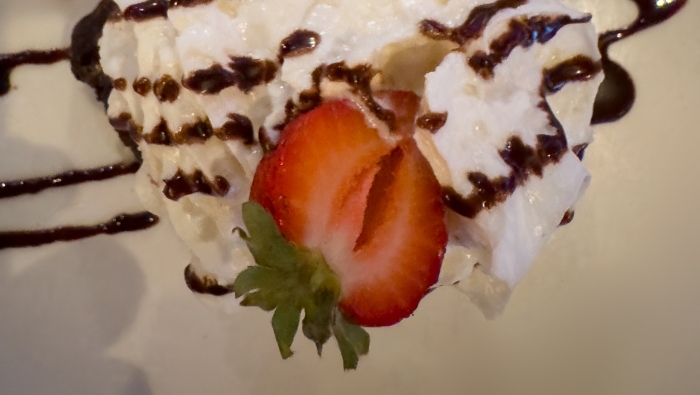

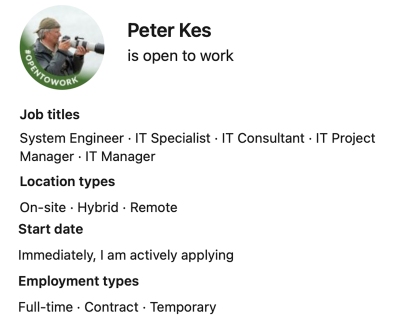
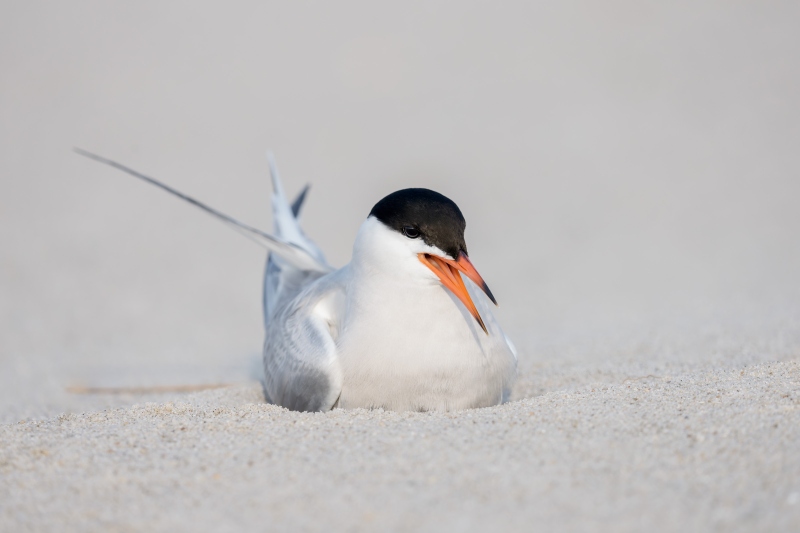
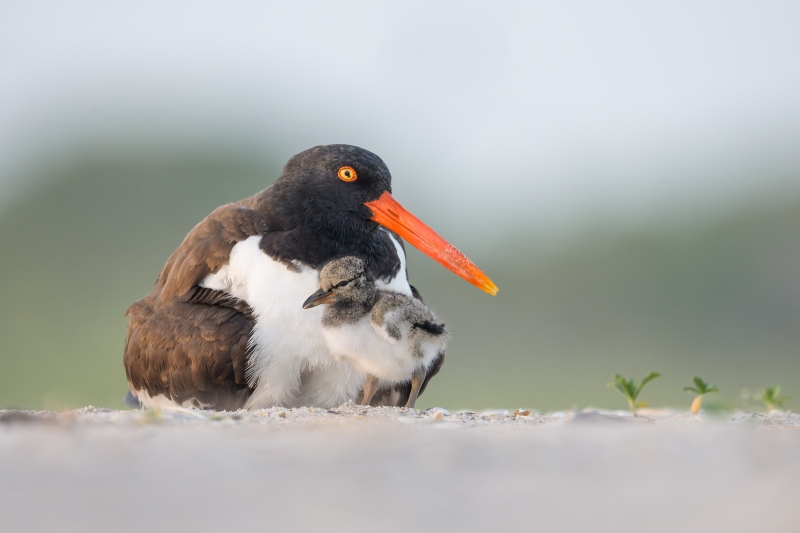
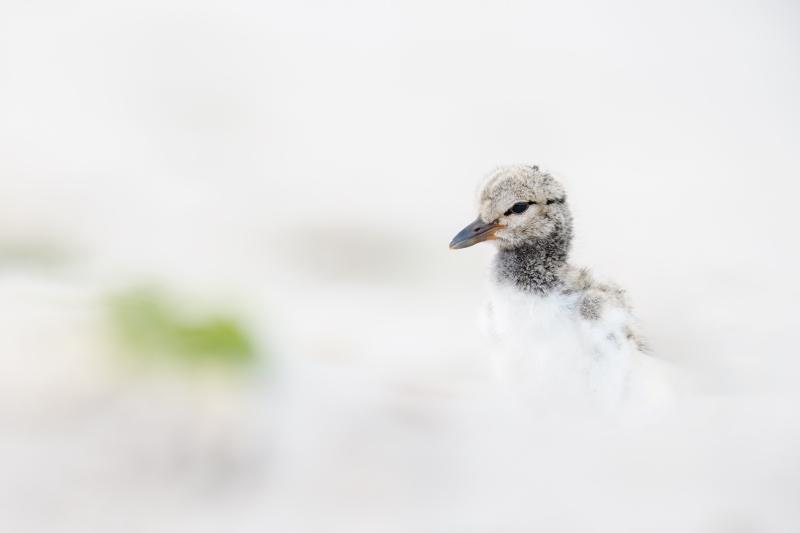
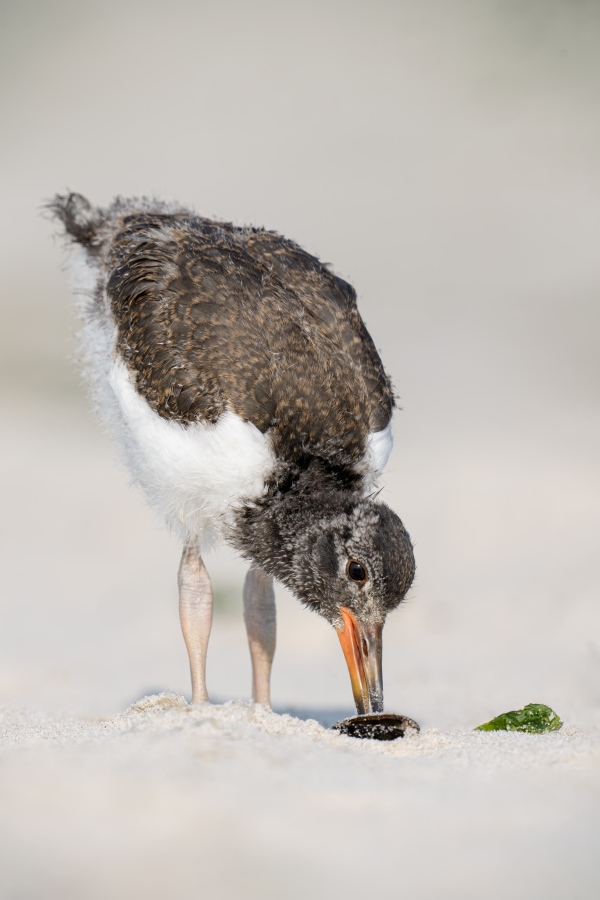
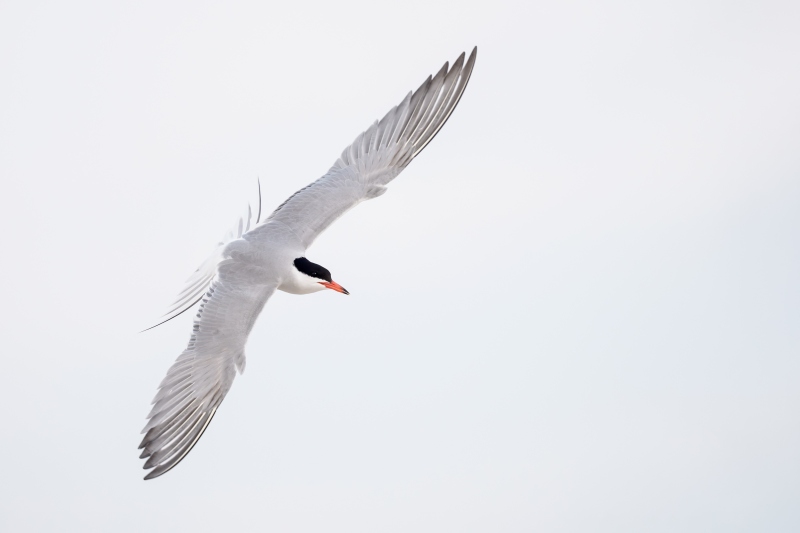

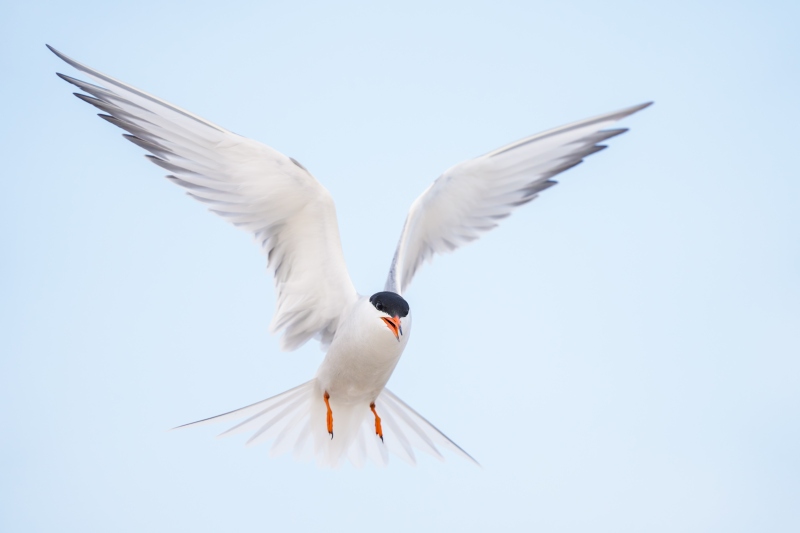
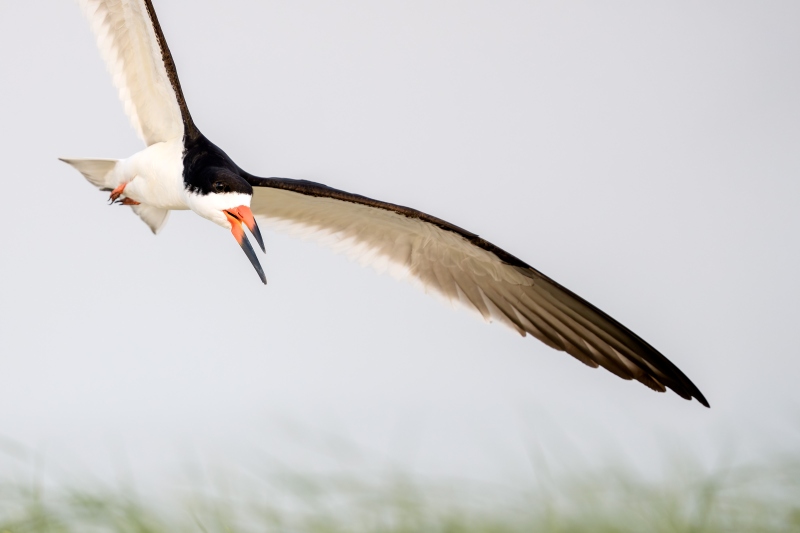
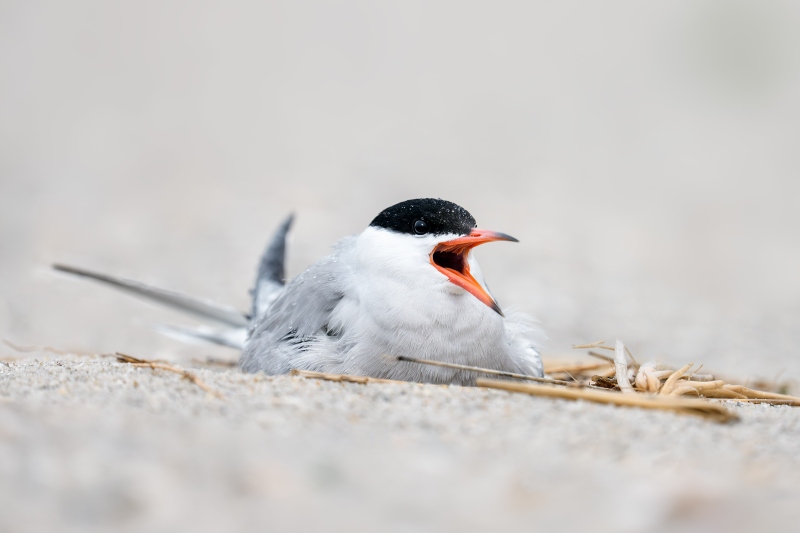






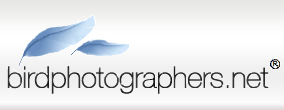


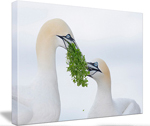
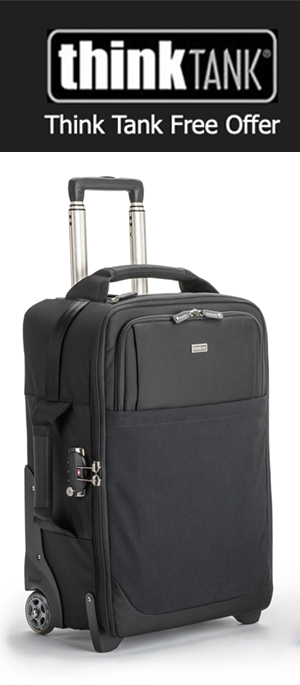


Happy Birthday Artie and many more enjoy.
Mazel Tov on your birthday, and wishing you continued health and blessings! #2 is fabulous for the reasons others have already mentioned though I’m also to #6 because it so perfectly captures flight from its unique head on perspective. Love the bit of asymmetry in the landing gear too which provides further viewer interest.
Happy Birthday! I hope your gift was good weather at Nickerson for bird photography today. My two favorites: #7 Tern in flight — I like the soft blue background which shows off the wings and tail so beautifully and #4 the gorgeous American oystercatcher chick — I’m amazed to see one that big so early in the season.
Love them all, but #2 really does it for me. Love the two perfect, but opposite, head angles.
The POV and distant, vegetative background sure doesn’t hurt either.